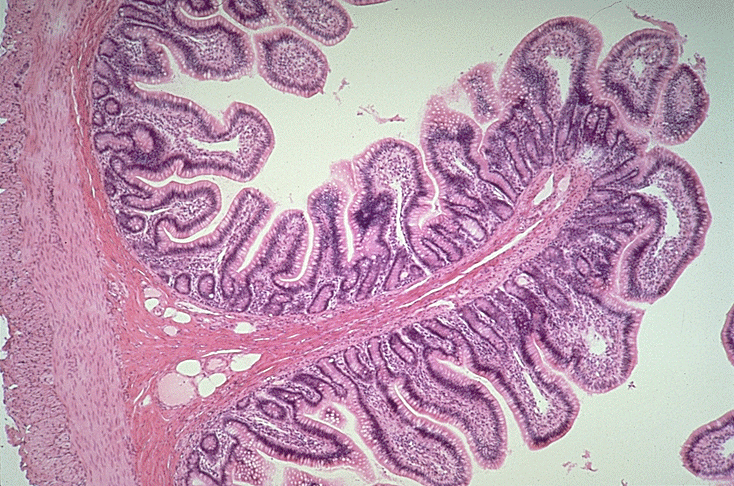Longitudinal Section Of Small Intestine

They also allow the stomach to grip the food as it.
Longitudinal section of small intestine. It is the region where most digestion and absorption of food takes place. It receives pancreatic secretions and bile through the hepatopancreatic duct. The small intestine is an organ located in the gastrointestinal tract between the stomach and the large intestine.
It is about 6 7 to 7 6 metres 22 to 25 feet long highly convoluted and contained in the central and lower abdominal cavity a thin membranous material the mesentery supports and somewhat suspends the intestines. The muscular coat consists of an internal circular and an external longitudinal layer fig. The ileum is the final section of the small intestine.
The small intestine is divided into the duodenum jejunum and ileum. It is on average 23ft long and is comprised of three structural parts. Intestinal villus in longitudinal section lined by a simple columnar epithelium with a brush border at its apical pole and some goblet cells.
Small intestine a long narrow folded or coiled tube extending from the stomach to the large intestine. The serous coat is formed by the visceral layer of the peritoneum. The scientists generally focus on a variety of tissues and procedures during the necropsy but no other tissue may be as quickly autolyzed as the gastrointestinal tract.
The duodenum jejenum and ileum. Procedures for obtaining ideal intestinal histological sections. 10x at 10 mm.
It is about 3 m long and contains villi similar to the jejunum. These ridges allow the stomach to expand as it fills. The villi in the jejunum are much longer than in the duodenum or ileum.


















